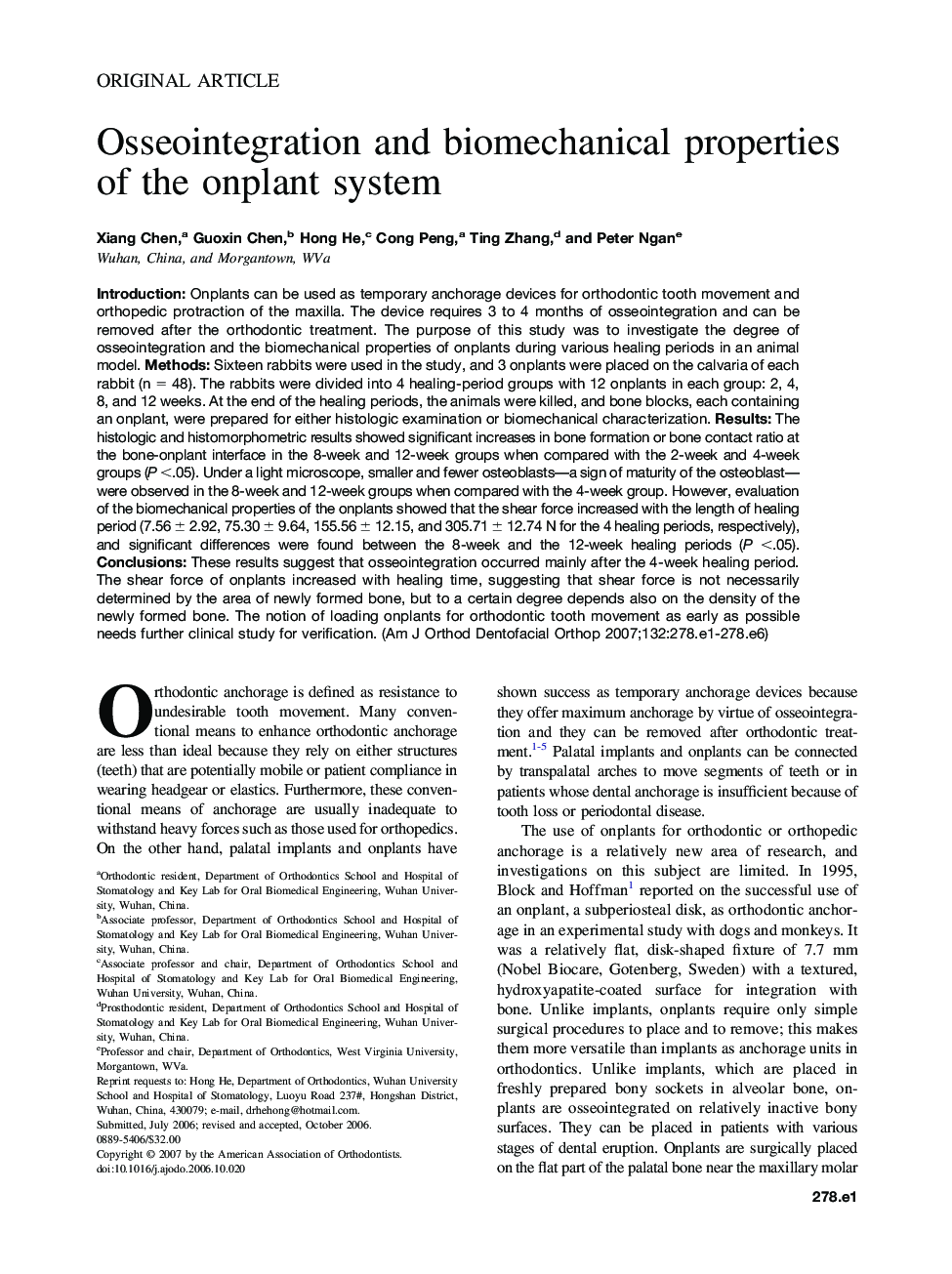| Article ID | Journal | Published Year | Pages | File Type |
|---|---|---|---|---|
| 3118918 | American Journal of Orthodontics and Dentofacial Orthopedics | 2007 | 6 Pages |
Abstract
Introduction: Onplants can be used as temporary anchorage devices for orthodontic tooth movement and orthopedic protraction of the maxilla. The device requires 3 to 4 months of osseointegration and can be removed after the orthodontic treatment. The purpose of this study was to investigate the degree of osseointegration and the biomechanical properties of onplants during various healing periods in an animal model. Methods: Sixteen rabbits were used in the study, and 3 onplants were placed on the calvaria of each rabbit (n = 48). The rabbits were divided into 4 healing-period groups with 12 onplants in each group: 2, 4, 8, and 12 weeks. At the end of the healing periods, the animals were killed, and bone blocks, each containing an onplant, were prepared for either histologic examination or biomechanical characterization. Results: The histologic and histomorphometric results showed significant increases in bone formation or bone contact ratio at the bone-onplant interface in the 8-week and 12-week groups when compared with the 2-week and 4-week groups (P <.05). Under a light microscope, smaller and fewer osteoblasts-a sign of maturity of the osteoblast-were observed in the 8-week and 12-week groups when compared with the 4-week group. However, evaluation of the biomechanical properties of the onplants showed that the shear force increased with the length of healing period (7.56 ± 2.92, 75.30 ± 9.64, 155.56 ± 12.15, and 305.71 ± 12.74 N for the 4 healing periods, respectively), and significant differences were found between the 8-week and the 12-week healing periods (P <.05). Conclusions: These results suggest that osseointegration occurred mainly after the 4-week healing period. The shear force of onplants increased with healing time, suggesting that shear force is not necessarily determined by the area of newly formed bone, but to a certain degree depends also on the density of the newly formed bone. The notion of loading onplants for orthodontic tooth movement as early as possible needs further clinical study for verification.
Related Topics
Health Sciences
Medicine and Dentistry
Dentistry, Oral Surgery and Medicine
Authors
Xiang Chen, Guoxin Chen, Hong He, Cong Peng, Ting Zhang, Peter Ngan,
